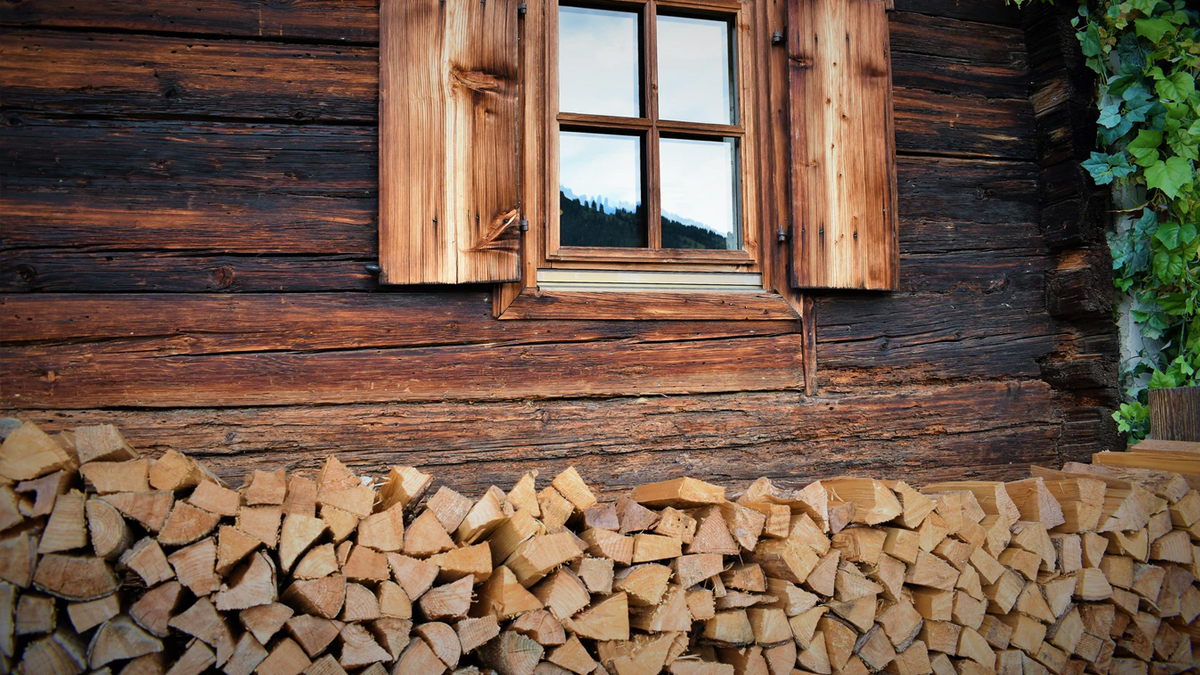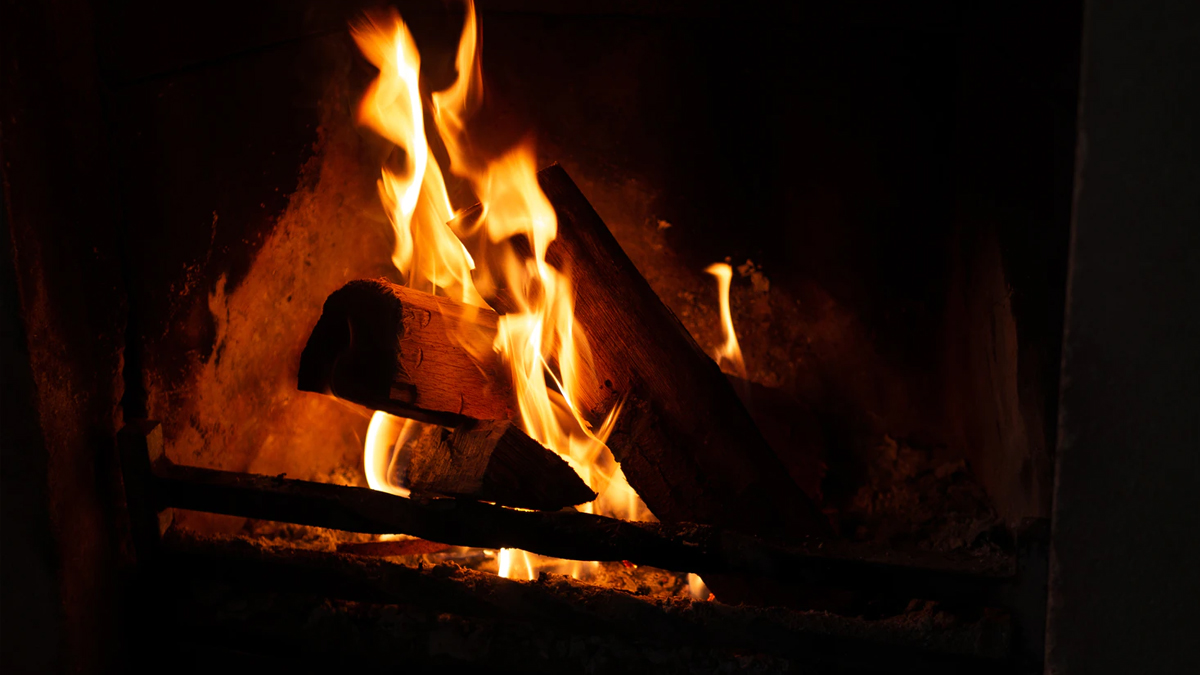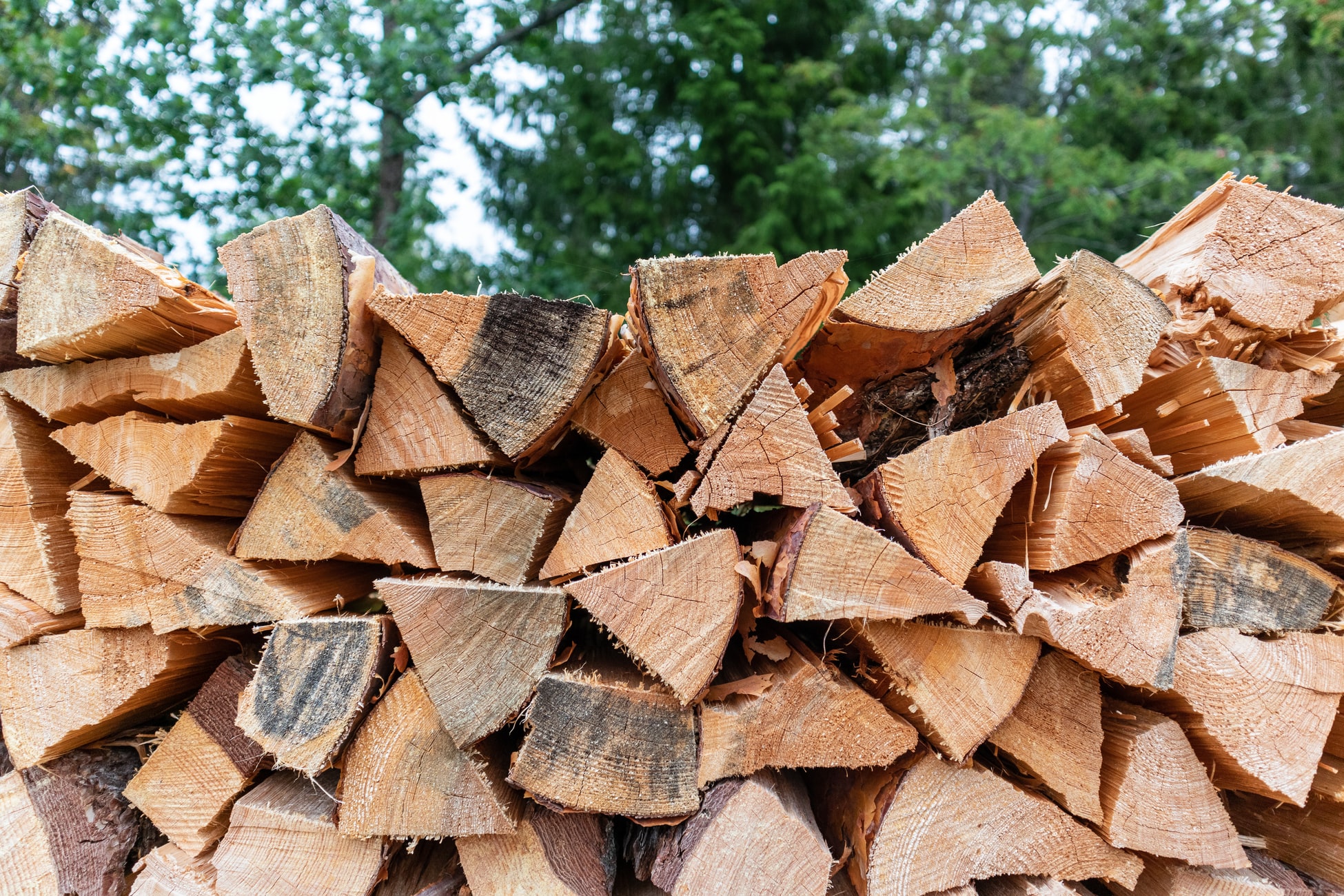on
On the face of it procuring firewood seems like a pretty simple task. But there is a lot more to it than most folks realize and it is easy to get burned in one way or another if you don’t know a little bit about it.
For starters, not all wood is created equal. Some burns easily, but is full of sap that will make a mess out of your woodstove, and it burns so quickly that you will be up feeding the fire all night instead of enjoying a slow burn all night long.
Here’s the scoop on selecting the right firewood for your needs and how to store it through the year.
Choose hardwoods: For long, lingering fires with lots of coals, choose hardwoods like oak, locust, hickory, and black maple. For small and simple fires while you cuddle and watch a movie at home, go for softer hardwoods like birch, poplar, cottonwood, or red maple. Softwoods like pine may be cheap and abundant, but they burn very quickly and you may find yourself hauling heavy loads of wood to and fro more often than you’d like.
Make sure your wood is properly seasoned: “Seasoning” is simply the term for drying your wood. Before you light that first fire, make sure your wood is fully dry. While surface water evaporates quickly on a piece of wood, any moisture remaining inside the wood causes it to ignite slowly, burn inefficiently, and smoke or smolder, producing little heat despite having a flame.
How do you know when your firewood has been properly seasoned? A few clues:
- Dry wood is lighter in weight and has cracks on the ends
- Dry wood turns gray, yellow, or deep brown as it dries (while wet, or “green” wood, is white, cream, or light brown)
- When you bang two logs together, you should hear a hollow smack instead of a deep thud
In general, softwoods need 6 to 12 months for seasoning, while hardwoods need 1 to 2 years. For most climates, it’s best to start seasoning your wood over the summer, when ample heat and sun will speed up the process of air-drying your stack. And for faster seasoning, it’s also important to…
Split your logs: Split wood dries quicker and burns better than round logs. Depending on the size of the log, split the wood into halves or quarters. It should be easy to hold with one hand and be no more than 6 to 8 inches in width, with the ideal size being 3 to 6 inches for most modern fireplaces inside the home. (The larger pieces are best suited for outdoor fire pits and wood furnaces.)
Purchase or cut the right size: A split piece of wood should be no longer than 18 inches long, with 16 inches a safer measurement to fit inside indoor fireplaces. If you’re splitting your own firewood, resist the temptation to cut down the last few feet in equal lengths to avoid “leftovers.” Split them no more than 16 inches long, and chop the remaining end into several smaller pieces to use as kindling.
When purchasing firewood, keep in mind that a pile is usually measured in cords. A face cord is 4 feet high by 8 feet wide, regardless of the length of the logs. A full cord is 4 feet high by 8 feet wide by 4 feet deep. Make sure you are buying logs that are stacked straight across; logs that are stacked “log cabin style” (criss-crossed) and measured as face cord or full cord mean you won’t be getting as much firewood as you paid for.
Never store firewood inside or right next to your home: If the wood has termites or ants, you don’t want to introduce them into your house! Keep a few logs near your fireplace for those evenings by the fire, but store the rest of your firewood outside away from the house and restock as needed.

If you don’t have a covered woodshed or storage area, store your firewood with the bark side of the log on top. Bark is a natural barrier and will keep some of the rain from saturating your wood. You can also lay a large tarp over the wood pile to protect it over winter; keep it weighed down on top with stones or bricks, but don’t fully cover the pile on all sides as you want to keep it ventilated.
Allow proper airflow around the wood; keep it off the ground and avoid stacking wood directly against a wall. Keep the pile elevated a few inches, either in a firewood rack, on a recycled pallet, or with a couple of thin, long logs running across the firewood underneath.
When you’re ready to make a fire, remember that your wood has been sitting outside for some time. Never reach into a hole blindly to grab a piece of wood, and keep an eye out for spiders, snakes, rats, and other creatures that may have taken up residence in your woodpile. (Another reason you don’t want to store your firewood right next to your home.)
Choosing firewood based on heat values
What makes some types of firewood better for burning than others? It comes down to two factors: density and water content. The denser and drier the firewood, the better it will burn and the more heat it can produce.
Because of this, hardwoods, which tend to be denser, generally make for better firewood than softwoods.

BEST FIREWOOD: HIGH HEAT VALUE
1 cord = 200 to 250 gallons of fuel oil
- American beech
- Apple
- Ironwood
- Mesquite
- Red oak
- Shagbark hickory
- Sugar maple
- White ash
- White oak
- Yellow birch
MEDIUM HEAT VALUE
1 cord = 150 to 200 gallons of fuel oil
- American elm
- Black cherry
- Douglas fir
- Red maple
- Silver maple
- Tamarack
- White birch
LOW HEAT VALUE
1 cord = 100 to 150 gallons of fuel oil
- Aspen
- Cottonwood
- Hemlock
- Lodgepole pine
- Red alder
- Redwood
- Sitka spruce
- Western red cedar
- White pine
Purchased vs. DIY firewood
Purchasing your own firewood can involve, buying logs, rounds or wood that is already split and seasoned. This can be costly, but especially when it comes to already split wood it can be a time and back saver.
Getting a permit, cutting your own wood in the forest and then hauling splitting and stacking saves you money, and can be a good group outing for the family with plenty of jobs even for younger children to help with such as loading and stacking. If you are interested in getting your firewood yourself you will want to read our article “Firewood cutting tips.”
Get access to premium content and more!





